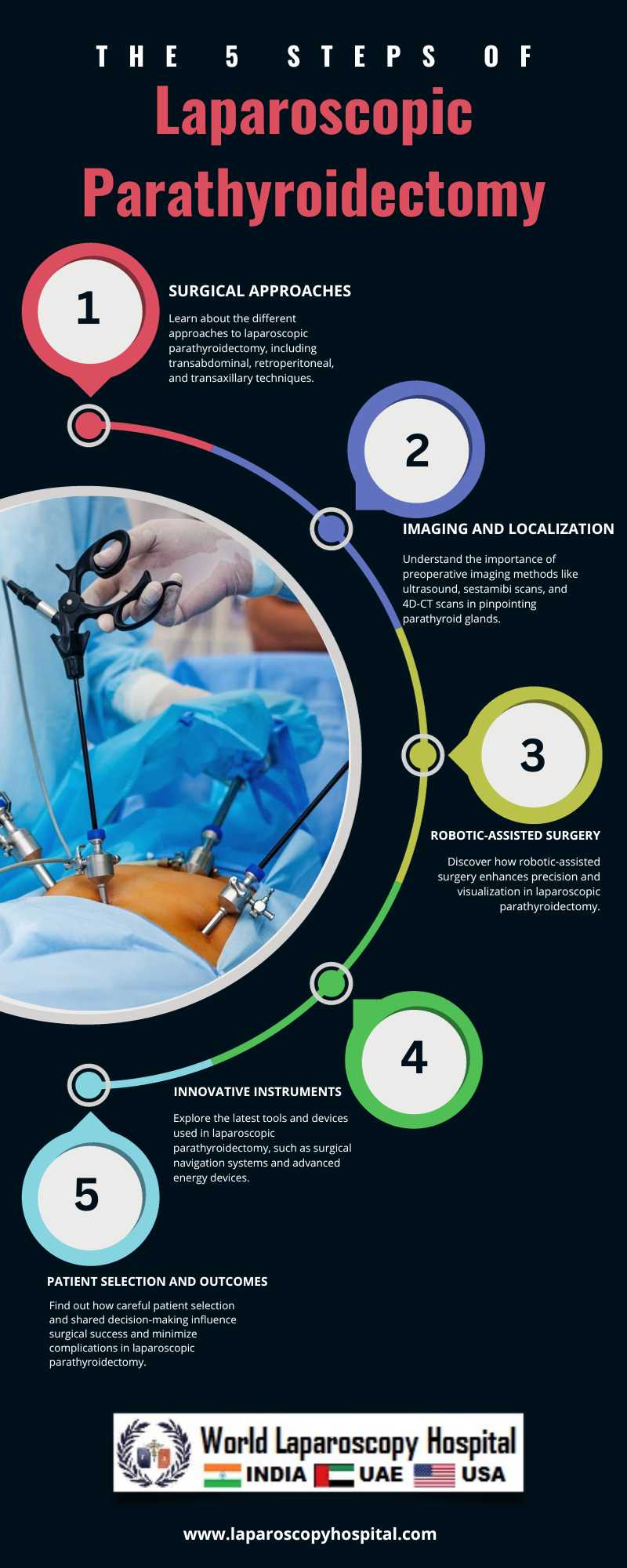Introduction:
In the realm of surgical innovation, laparoscopic parathyroidectomy stands out as a prime example of how modern medicine continually evolves to improve patient outcomes. This minimally invasive procedure has gained significant traction in recent years, offering a less traumatic alternative to traditional open surgery for patients with hyperparathyroidism. In this article, we will delve deep into the world of laparoscopic parathyroidectomy, exploring its history, evolution, and the cutting-edge techniques that are shaping the future of this procedure.

I. The Evolution of Parathyroid Surgery
To truly appreciate the significance of cutting-edge laparoscopic techniques, it's essential to understand the historical context of parathyroid surgery. The journey began with the discovery of the parathyroid glands by Sir Richard Owen in 1850 and their vital role in calcium regulation within the body. However, the surgical treatment of hyperparathyroidism only became feasible in the mid-20th century.
1. Traditional Open Parathyroidectomy
- The pioneering work of surgeons like Felix Mandl and Irving Dott paved the way for the first successful open parathyroidectomy procedures.
- Limitations and drawbacks of open surgery, including a more extensive incision, longer recovery times, and increased risk of complications.
II. The Advent of Minimally Invasive Surgery
The late 20th century witnessed a paradigm shift in the field of parathyroid surgery with the introduction of minimally invasive techniques. The key development that set the stage for laparoscopic parathyroidectomy was the realization that the vast majority of parathyroid adenomas could be treated through focused approaches.
2. Minimally Invasive Radioguided Parathyroidectomy (MIRP)
- The groundbreaking work of Dr. James Norman and others in the 1990s.
- Utilization of radioguidance to locate and remove overactive parathyroid glands.
- Reduced incision size and shorter hospital stays.
III. Laparoscopic Parathyroidectomy: A Game-Changer
Laparoscopic parathyroidectomy, a subset of minimally invasive parathyroid surgery, has become a game-changer in the treatment of hyperparathyroidism. This technique leverages advanced technologies and surgical approaches to further enhance patient care.
3. Surgical Approach
- Discussing the various surgical approaches for laparoscopic parathyroidectomy, including the transabdominal, retroperitoneal, and transaxillary routes.
- The importance of selecting the most appropriate approach based on patient anatomy and surgeon experience.
4. Imaging and Localization Techniques
- The role of preoperative imaging techniques such as ultrasound, sestamibi scans, and 4D-CT scans in precise gland localization.
- How intraoperative parathyroid hormone (IOPTH) monitoring assists in confirming successful gland removal.
5. Robotic-Assisted Laparoscopic Parathyroidectomy
- The emergence of robotic-assisted surgical systems and their application in parathyroid surgery.
- Advantages of robotic assistance, including enhanced dexterity and visualization.
IV. Innovative Tools and Instruments
The field of laparoscopic parathyroidectomy continues to evolve thanks to innovative tools and instruments that make the procedure even more precise and efficient.
6. Surgical Navigation Systems
- How GPS-like navigation systems aid surgeons in real-time localization of parathyroid glands during surgery.
- Enhanced accuracy and reduced operative times with the use of navigation tools.
7. Energy Devices
- Discussing the latest advancements in energy devices such as harmonic scalpel and LigaSure for tissue dissection and hemostasis.
- The benefits of reduced bleeding and tissue trauma.
V. The Importance of Training and Surgeon Expertise
Cutting-edge techniques are only as effective as the surgeons who implement them. Training and expertise play a crucial role in achieving successful outcomes in laparoscopic parathyroidectomy.
8. Surgeon Training Programs
- Overview of specialized training programs and courses that equip surgeons with the skills needed for laparoscopic parathyroidectomy.
- The significance of mentorship and proctoring in the learning process.
9. Case Selection and Decision-Making
- The importance of careful patient selection based on factors like gland size, location, and patient comorbidities.
- Shared decision-making between patients and surgeons for informed choices.
VI. Outcomes and Complications
Evaluating the outcomes of laparoscopic parathyroidectomy is crucial in understanding its effectiveness and safety profile.
10. Success Rates and Recurrence
- Discussing the high success rates of laparoscopic parathyroidectomy in curing hyperparathyroidism.
- Analyzing the factors contributing to recurrence and strategies to minimize it.
11. Complications and Their Management
- Exploring potential complications such as hypocalcemia, recurrent laryngeal nerve injury, and hematoma formation.
- Strategies for early detection and management of complications.
VII. Future Directions and Conclusion
As technology and surgical expertise continue to advance, the future of laparoscopic parathyroidectomy holds promise for further refinement and improved patient outcomes.
12. Emerging Technologies
- A glimpse into potential future technologies, including augmented reality-guided surgery and AI-assisted decision-making.
- The role of research and development in shaping the future of parathyroid surgery.
Conclusion:
Laparoscopic parathyroidectomy has undergone a remarkable journey from its inception to the cutting-edge techniques of today. As surgeons continue to refine their skills and embrace innovative approaches, the outlook for patients with hyperparathyroidism remains bright, promising shorter recovery times, reduced morbidity, and enhanced overall well-being. The future of minimally invasive parathyroid surgery holds exciting possibilities, making it an area of ongoing interest and advancement within the field of surgery.